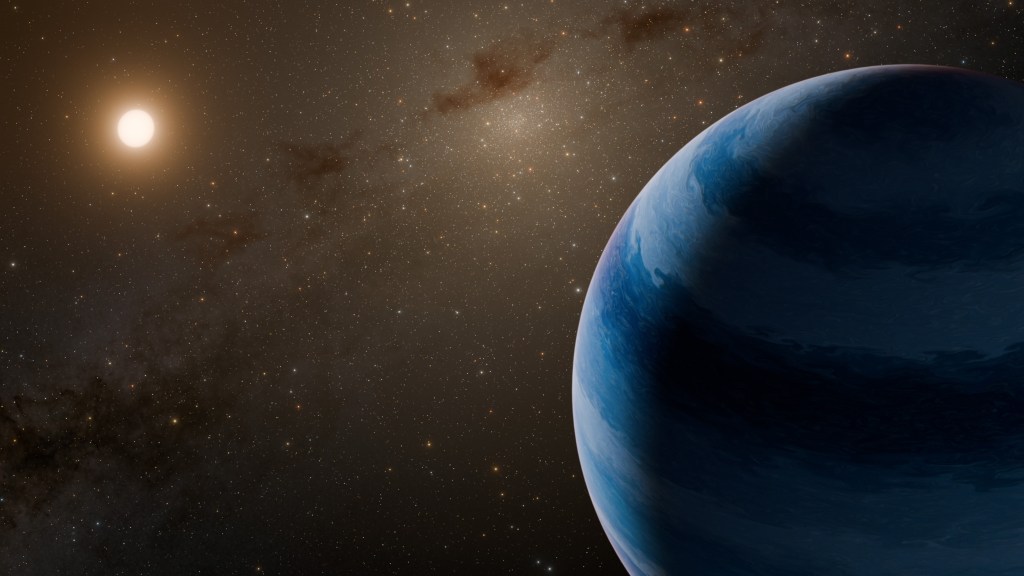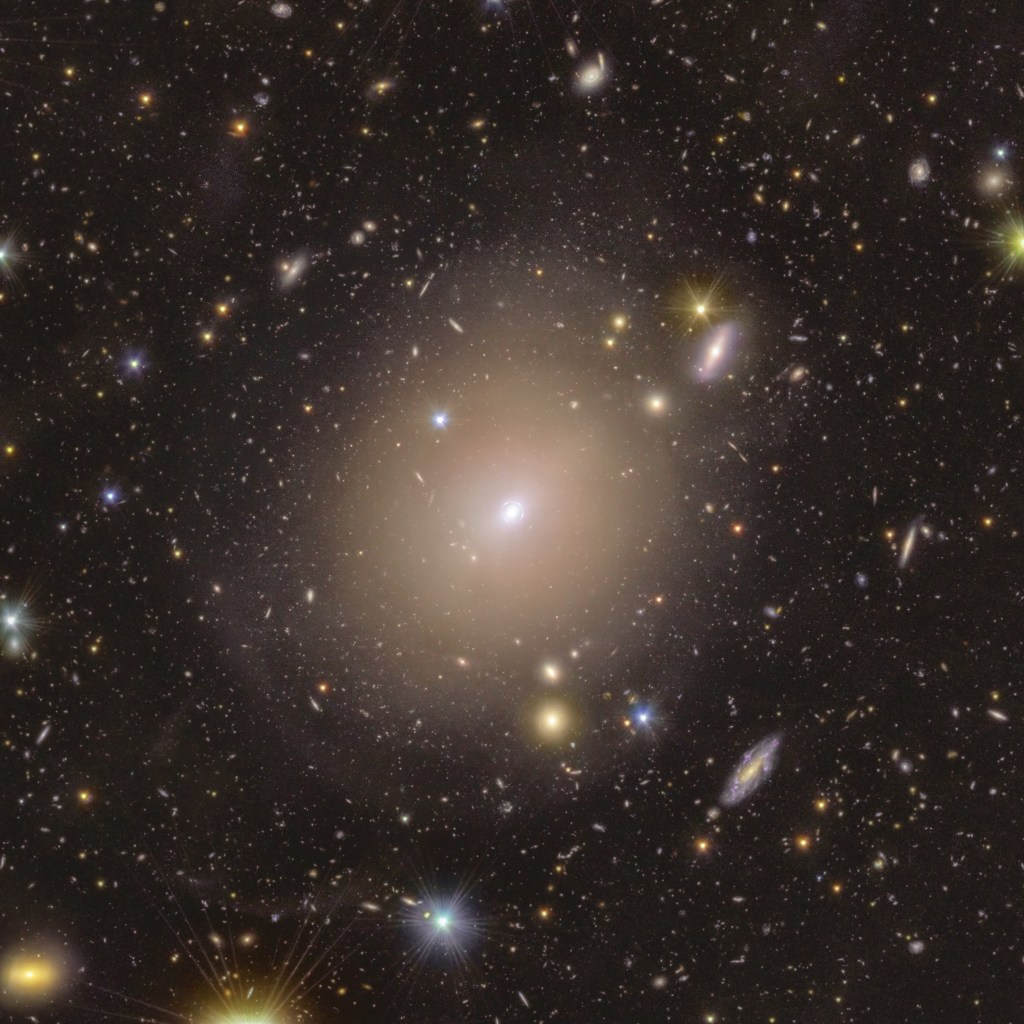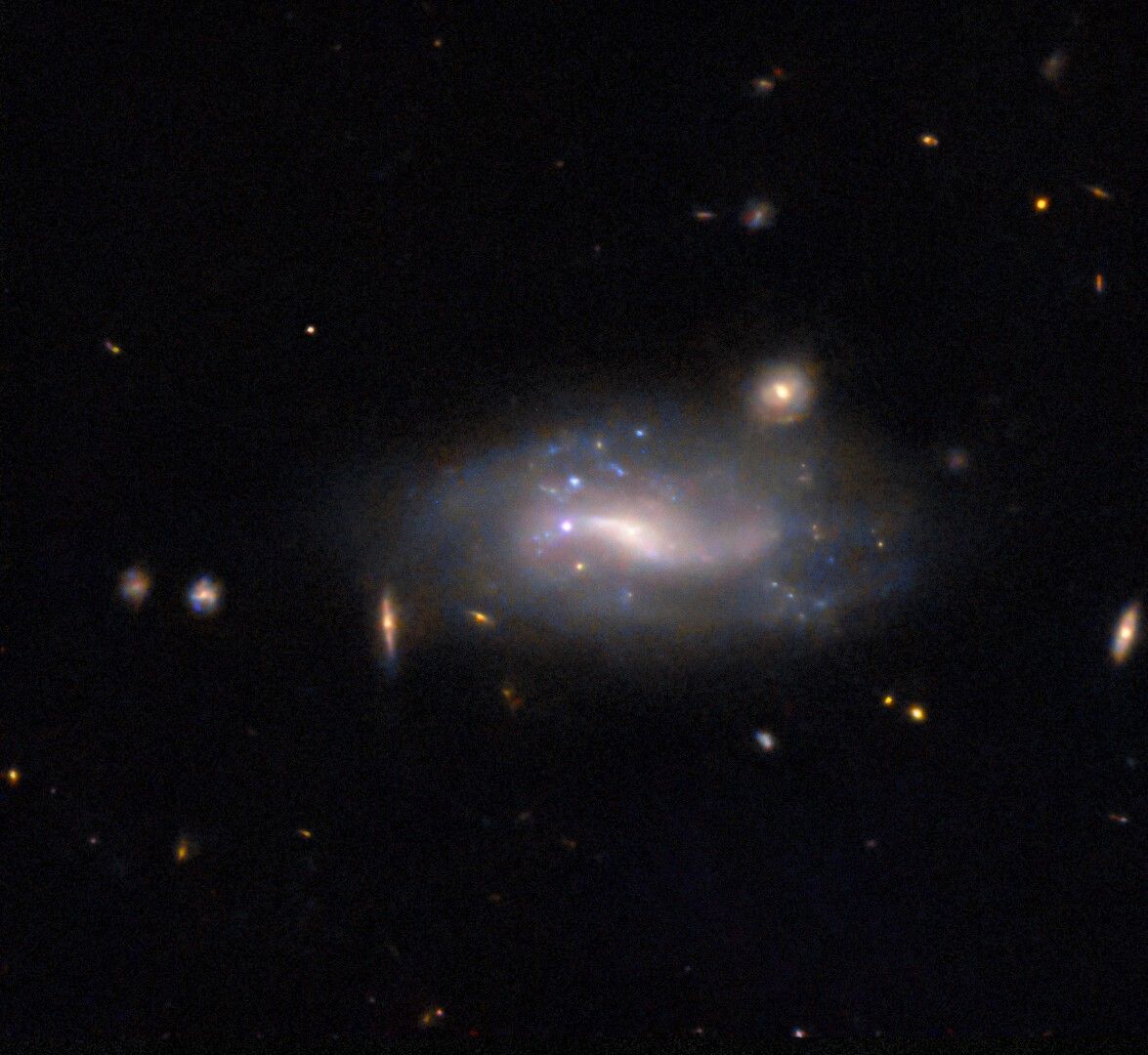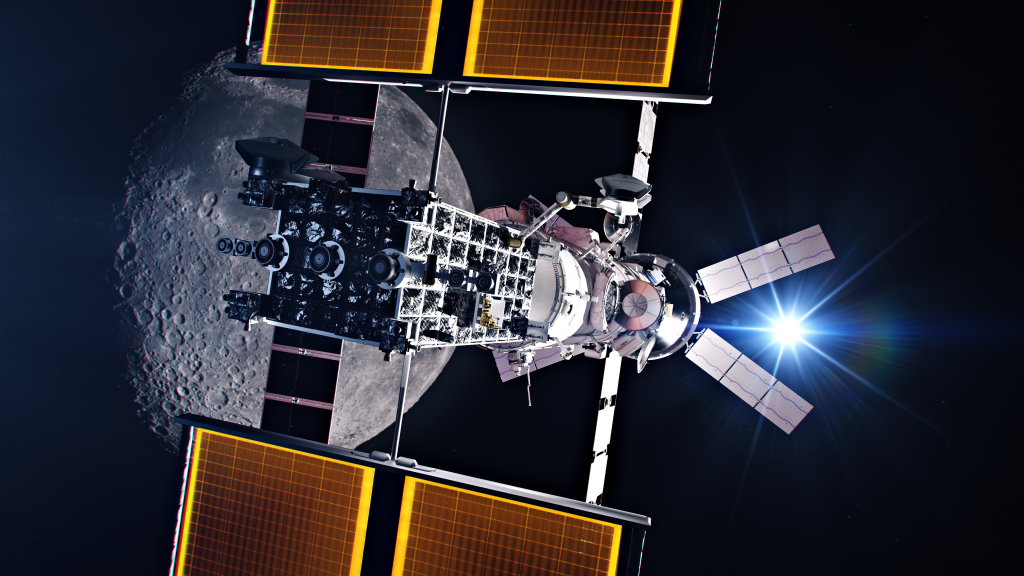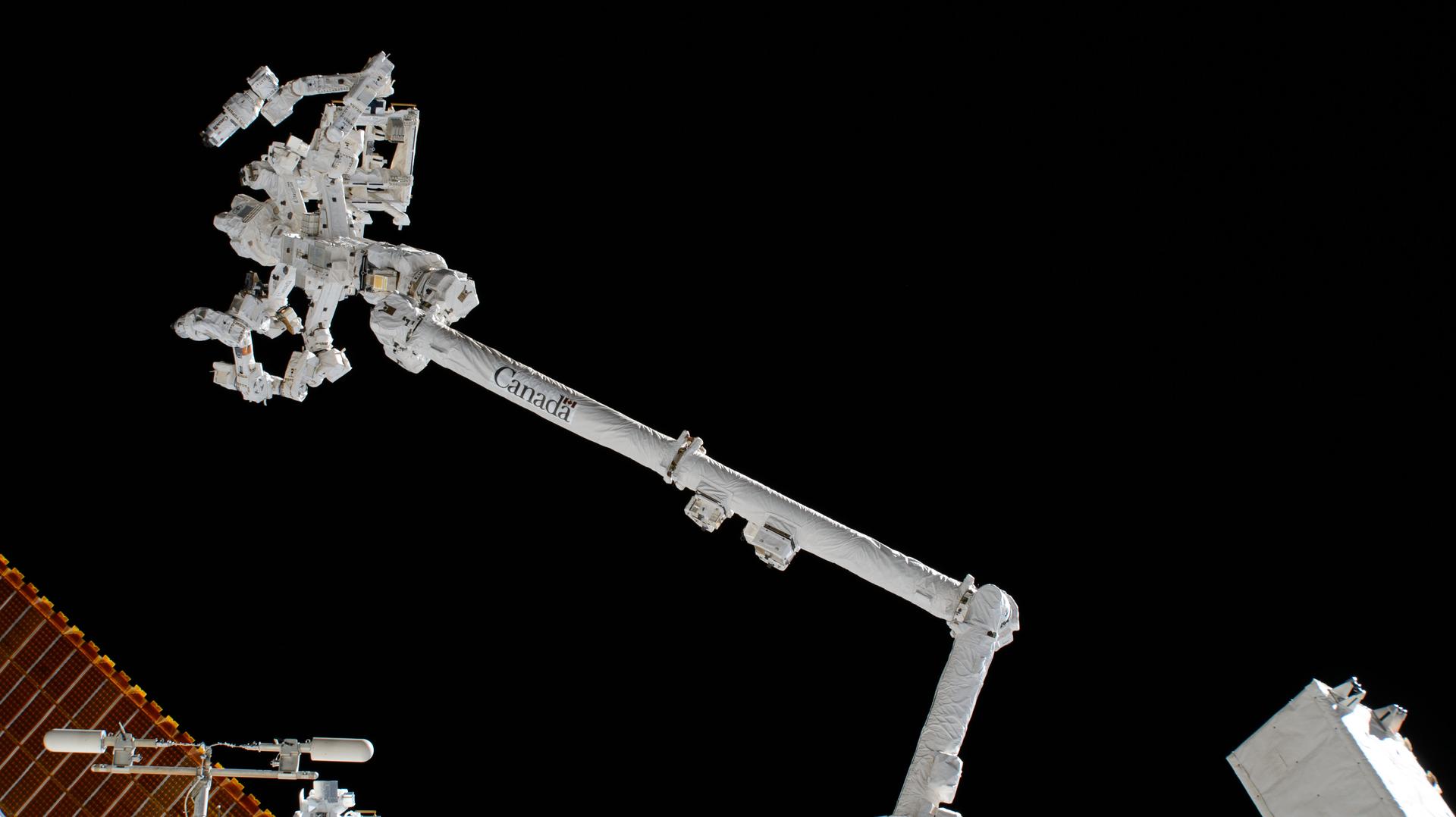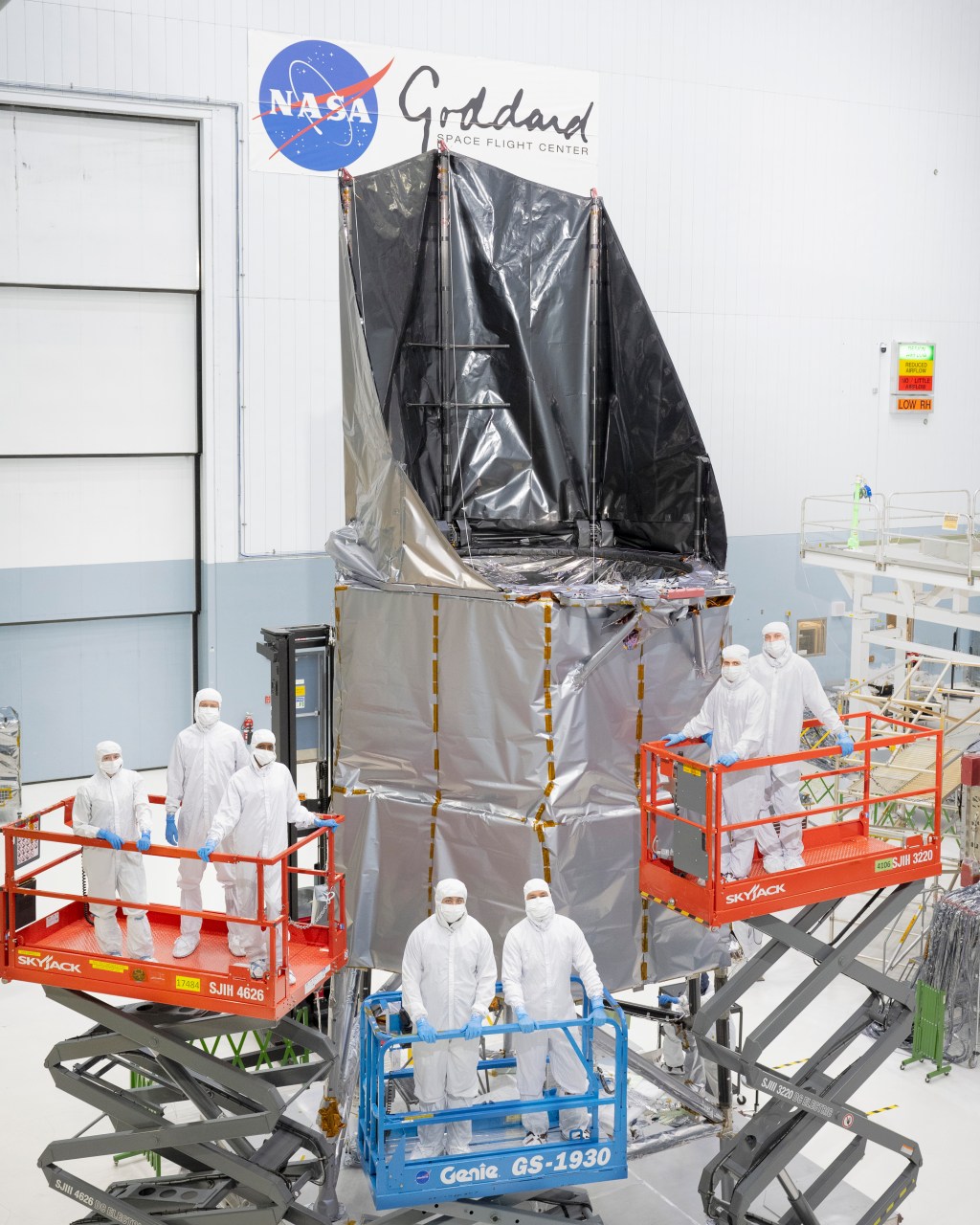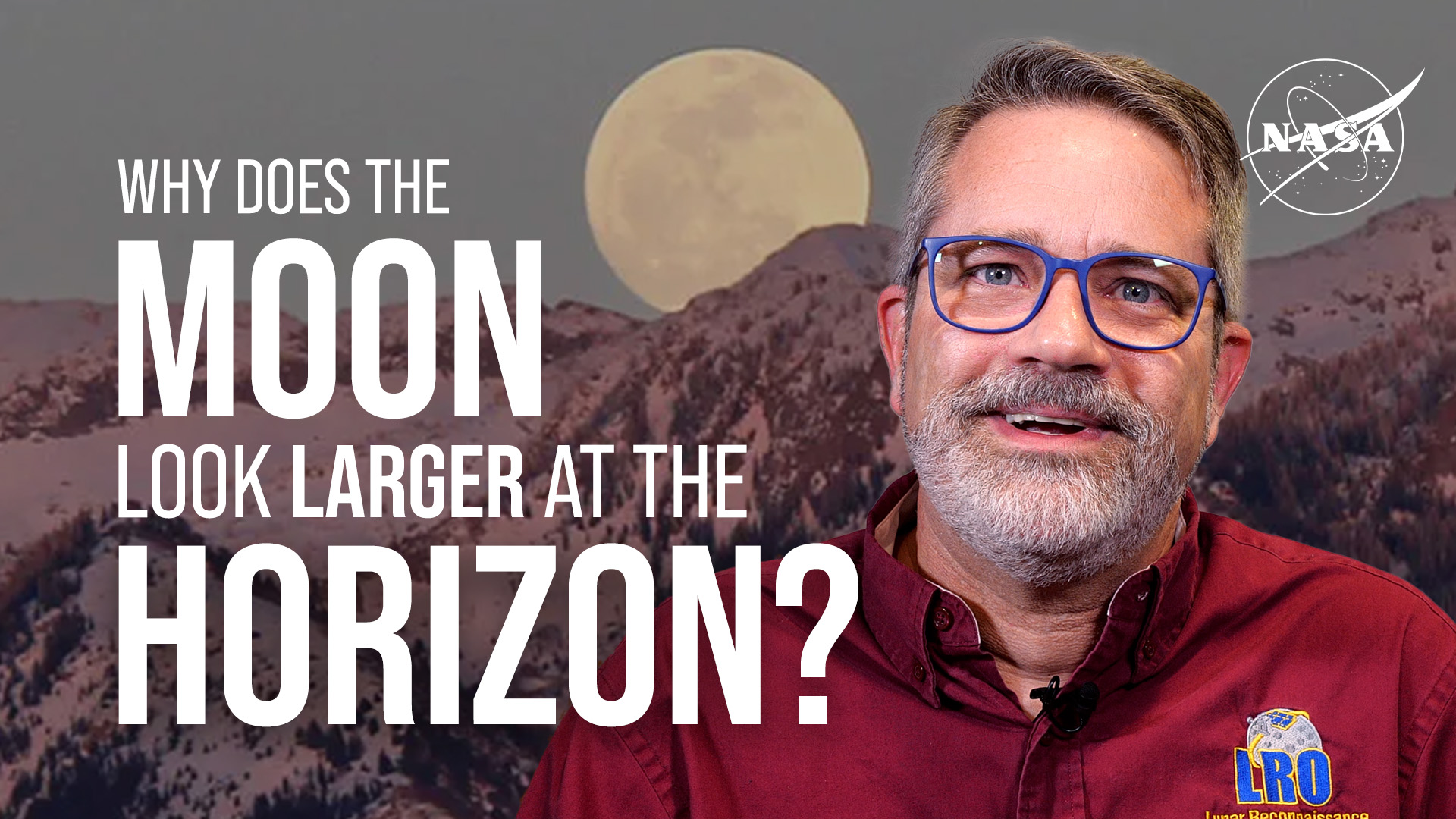The next full Moon will be early on Monday morning, November 30, 2020.
The next full Moon is the Cold Moon, Frost Moon, Winter Moon, Beaver Moon, Oak Moon, Moon Before Yule, Child Moon, Kartik Purnima, Karthika Deepam and Tazaungdaing Festival Moon, and Ill Poya.
The next full Moon will be early on Monday morning, November 30, 2020, appearing opposite the Sun (in Earth-based longitude) at 4:30 AM EST. The Moon will appear full for about three days around this time, from Saturday night through Tuesday morning. The Moon will be close enough to opposite the Sun that it will pass through the partial shadow of the Earth, with 83 percent of the Moon in the partial shadow at 4:44 AM, the peak of the eclipse. The dimming of the Moon during this eclipse will probably not be noticeable without instrumentation, but for spacecraft at the Moon such as the Lunar Reconnaissance Orbiter (LRO) the reduction in solar power will be noticeable.
In the 1930’s the Maine Farmer’s Almanac first published “Indian” names for the yearly full Moons tied to the European months. I think it more likely these Native American names were loosely tied to the seasons (especially if they were in use before contact with Europeans). Because most of the Earth had two full Moons in October 2020 (the newer definition of a Blue Moon), the Moon names by season and names by month will be offset until the summer of 2021, which will have four full Moons (and have a Blue Moon by the older definition). Going by season, as the last full Moon of the autumn the Algonquin tribes of what is now the northern and eastern United States called this Moon the Cold Moon, due to the long, cold nights. Other names were the Frost Moon or the Winter Moon, for the frosts as winter nears. Going by month, this would be the Beaver Moon and the full Moon after next would be the Cold Moon.
As the full Moon before the winter solstice, an old European name for this Moon is the Oak Moon, a name that some believe ties back to ancient druid traditions of harvesting mistletoe from oak trees first recorded by the Roman historian Pliny the Elder in the 1st century CE. The term “druid” may derive from the Proto-Indo-European roots for “oak” and “to see,” suggesting the term means “oak knower” or “oak seer.” Europeans also called this the Moon before Yule, a 3-day winter solstice festival. In the 10th Century King Haakon I associated Yule with Christmas as part of the Christianization of Norway, and this association spread throughout Europe. Some sources use these names for the full Moon in December, even if it occurs after Yule and the winter solstice.
When she saw the rising full Moon, she said: “You know what this Moon is called? It’s called a Child Moon. Because the Moon rises at a time that the children, they can see it, because they’re not in bed, and they might even be outside like we are right now.”
A year ago, 7-year-old Astrid Hattenbach was walking home from school with her father Henry Throop (a friend and former coworker at NASA Headquarters). When she saw the rising full Moon, she said: “You know what this Moon is called? It’s called a Child Moon. Because the Moon rises at a time that the children, they can see it, because they’re not in bed, and they might even be outside like we are right now.” Henry told me about this and I thought it a perfect name. For the Northern Hemisphere the earliest sunsets of the year are in early December. With this full Moon on November 30, the evening before, Sunday, November 29, 2020, is the earliest sunset of the year with a full Moon in the sky, making this the Child Moon!
This full Moon is Kartik Purnima, celebrated by Hindus, Jains, and Sikhs (each for different reasons). Karthika Deepam, also known as Karthikai Vilakkidu or Thrikarthika, is a festival of lights that is observed by Hindus of Tamil Nadu, Sri Lanka, and Kerala. This festival is celebrated when the nearly full Moon lines up with the Pleiades constellation (Krittika or Karttikai), and will be celebrated this year on November 29, 2020. In Myanmar the festival of lights associated with this full Moon is the Tazaungdaing Festival, a festival that predates the introduction of Buddhism. Every full Moon (Poya) is a holiday in Sri Lanka. This is the Ill (or Il) Poya, commemorating the Buddha’s ordination of sixty disciples as the first missionaries.
In lunisolar calendars the months change with the new Moon and full Moons fall in the middle of the lunar month. This full Moon is the middle of the tenth month of the Chinese calendar and Kislev in the Hebrew calendar. Hanukkah begins towards the end of Kislev and ends early in the next month, Tevet. In the Islamic calendar the months start with the first sighting of the waxing crescent Moon after the New Moon. This full Moon is near the middle of Rabi’ al-Thani, the fourth month of the Islamic year.
As usual, the wearing of suitably celebratory celestial attire is encouraged in honor of the full Moon. Stay warm, but take advantage of these early nightfalls to get out, look up, and share the wonders of the sky!
Watch the Skies
As for other celestial events between now and the full Moon after next:
As autumn ends and winter begins, the daily periods of sunlight reach their shortest and then begin to lengthen again. The day of the northern hemisphere winter solstice is sometimes called the “shortest day of the year” because it has the shortest period of daylight. It is actually nearly the longest solar day of the year (as measured for example from noon to noon on a sundial). The length of a solar day varies throughout the year (if you’re interested in why, I can send a separate document upon request). Around the solstices the solar days are slightly longer than the 24 hour average that our clocks use. Because of this, the earliest sunsets of the year occur before the winter solstice and the latest sunrises of the year (ignoring Daylight Savings Time) occur after the solstice.
For the Washington, DC area (using the location of NASA Headquarters), on the day of the full Moon (Monday, November 30, 2020), morning twilight will begin at 6:05 AM EST, sunrise will be at 7:07 AM, solar noon will be at 11:56:59 AM when the Sun will reach its maximum altitude of 29.35 degrees, sunset will be at 4:47 PM, and evening twilight will end at 5:49 PM.
For the DC area and similar latitudes, Sunday and Monday, December 6 and 7, 2020, will be tied for the earliest sunsets of the year, with sunsets at 4:45:51 PM EST.
The winter solstice will be on Monday morning, December 21, 2020, at 5:02 AM EST. For the DC area morning twilight will begin at 6:20 AM, sunrise will be at 7:23 AM, solar noon will be at 12:06:29 PM when the Sun will reach its maximum altitude of 27.71 degrees (its lowest in the sky for the year), sunset will be at 4:50 PM, and evening twilight will end at 5:53 PM. The day of the winter solstice will have the shortest period of sunlight for the year, 9 hours, 26 minutes, 13.5 seconds. The solar day from solar noon on Monday to solar noon on Tuesday, December 22, 2020, will be the longest solar day of the year, 29.76 seconds longer than 24 hours.
By the day of the full Moon after next (Tuesday, December 29, 2020), morning twilight will begin at 6:23 AM EST, sunrise will be at 7:26 AM, solar noon will be at 12:10:25 PM when the Sun will reach its maximum altitude of 27.98 degrees, sunset will be at 4:55 PM, and evening twilight will end at 5:58 PM.
On the evening of the full Moon on Monday, November 30, 2020, as evening twilight ends (at 5:49 PM EST for the Washington, DC area), the bright planet Jupiter will appear 20 degrees above the horizon in the southwest with the planet Saturn appearing to the upper left of Jupiter at 22 degrees above the horizon. The bright planet Mars will appear about 42 degrees above the horizon in the east-southeast. The bright star appearing closest to directly overhead will be Deneb, appearing 70 degrees above the horizon in the west-northwest. Deneb is one of the three bright stars in the “Summer Triangle,” along with Vega to the west-northwest at 47 degrees above the horizon and Altair to the west-southwest at 45 degrees above the horizon.
As the lunar cycle progresses, these planets and the background of stars will appear to shift towards the west. Mars will remain high and visible, having reached its closest and brightest for the year on October 13, 2020. We will be coming to the end of the evenings with good viewing of the planets Jupiter and Saturn, but these two planets will give us one more show (both for the naked eye and by telescope) before they pass around the far side of the Sun as seen from the Earth. In late November and the first part of December Jupiter and Saturn will appear to gradually shift closer to each other, appearing nearer than the apparent diameter of the Moon from December 17 to 25. They will appear at their closest, about one-fifth the diameter of the Moon, on December 21, 2020. With a backyard telescope you should be able to see in the same field of view Jupiter’s four bright moons, Ganymede, Callisto, Europa, and Io, as well as Saturn’s brightly illuminated rings and largest moon, Titan. Seeing Jupiter and Saturn so near each other should appear spectacular by telescope and with the naked eye.
By the evening of the full Moon after next on Tuesday, December 29, 2020, as evening twilight ends (at 5:58 PM EST for the Washington, DC area), the bright planet Jupiter will appear 7.5 degrees above the horizon in the west-southwest with the planet Saturn appearing to the lower right of Jupiter at 6.75 degrees above the horizon. The planet Mars will appear about 58 degrees above the horizon in the southeast and will be the bright object that appears closest to directly overhead. The bright stars of the Orion–Cygnus Arm of our home galaxy will appear low on the horizon in the east.
On the morning of the next full Moon on November 30, 2020, as morning twilight begins (at 6:05 AM EST for the Washington, DC area), the bright planet Venus will appear in the east-southeast about 13 degrees above the horizon. The planet Mercury will rise at 6:14 AM (about 9 minutes after morning twilight begins) and may be visible until about 30 minutes before sunrise (about 6:37 AM). The bright star appearing closest to overhead will be Regulus, which will be about 62 degrees above the horizon in the south-southwest. The bright stars of the Orion–Cygnus Arm of our home galaxy, including the brightest of the stars, Sirius, and the constellation Orion, will appear low on the horizon from the southwest to the northwest.
As the lunar cycle progresses, the background of stars will appear to shift towards the west each morning while the planet Venus will appear to shift slowly towards the east, dimming slightly as it moves farther away from the Earth and towards the far side of the Sun. The planet Mercury will be below the horizon as morning twilight begins but may visible as it rises in the glow of dawn until about December 6, 2020. By the morning of the full Moon after next on December 29, 2020, as morning twilight begins (at 6:23 AM EST for the Washington, DC area), the bright planet Venus will appear in the east-southeast about 5 degrees above the horizon. The bright star appearing closest to overhead will be Arcturus, which will be about 63 degrees above the horizon in the southeast.
December 13-14: Geminid Meteor Shower Peaks
The Geminid Meteor Shower will occur during this lunar cycle, one of the best meteor showers of the year. The Geminids are expected to be active from December 4 to 20 and to peak on the night of December 13 into the morning of December 14, 2020. This peak is near the new Moon, so moonlight will not interfere, making this a good year for the Geminids. Under ideal conditions this shower should peak at 140 to 150 visible meteors per hour. Ideal conditions include a dark place far from any light sources, clear skies (no clouds or high hazes), a clear view of a large expanse of the sky, and plenty of uninterrupted darkness to allow your eyes to adapt. Unlike most meteor showers, the constellation Gemini (the radiant for this shower) is far enough north that (for the Northern Hemisphere) these meteors should be visible as long as the sky is fully dark (for the Washington, DC area from about 6:22 PM on December 13 through 5:43 AM on December 14, 2020). According to the International Meteor Organization’s 2020 Meteor Shower Calendar, the world-wide maximum is expected December 13, 2020, at 7:50 PM EST, but this shower tends to have a broad peak so meteor viewing should be good throughout the night. You might even see a few meteors on the nights around this peak. The other showers during this lunar cycle are expected to have visibility limited by moonlight or to peak at 5 or less visible meteors per hour even under ideal conditions (which very few of us have access to in our urban and suburban environments).
This meteor shower is called the Geminids because the meteors appear to radiate out from the constellation Gemini. The Geminids are relatively slow moving meteors, entering the Earth’s atmosphere at about 35 kilometers per second (78,000 miles per hour). The Geminids appear to be one of only two annual meteor showers associated with asteroids rather than comets. The dust that causes the Geminids appears to come from the asteroid 3200 Phaethon, which has an eccentric 1.4 year-long orbit that takes it out as far as the main asteroid belt and much closer to the Sun than Mercury. The problem is that it is hard to explain why there is so much dust. One possibility is that this asteroid may have shot out gas and dust when it was close to the Sun in past orbits. There are other possible explanations (and thanks to Bill Cooke at NASA MSFC for providing me this information a few years ago). There is another asteroid, 2005 UD, that appears to be in a related orbit. It is possible that two asteroids collided with one another, producing 2005 UD, 3200 Phaethon, and the massive amounts of debris that cause the Geminids each year. It is also possible that a larger body in a similar orbit broke apart due to thermal stress or other reasons, producing these two asteroids and the Geminids stream.
November 25
Wednesday evening into Thursday morning, November 25 to 26, 2020, the bright planet Mars will appear above the waxing gibbous Moon. The Moon will appear about 34 degrees above the east-southeastern horizon as evening twilight ends (at 5:50 PM EST for the Washington, DC area), the Moon will reach its highest in the sky at 8:57 PM, and Mars will set first in the west Thursday morning at 3:08 AM.
Even though they are not usually visible, I include in these Moon missives information about Near Earth Objects (mostly asteroids) that may pass the Earth within 5 lunar distances, because I find it interesting that we have discovered so many. Sometime between now and early December, 2020 (2020-Nov-26 04:41 UTC with 8 days, 1 hour, 42 minutes uncertainty), Near Earth Object (2018 RQ4), between 11 and 25 meters (36 to 81 feet) across, will pass the Earth at between 1.1 and 22.3 lunar distances (nominally 8.1) traveling at 7.44 kilometers per second (16,640 miles per hour).
November 26
Thursday morning, November 26, 2020, will be the last morning for this apparition that the planet Mercury will be above the east-southeastern horizon when morning twilight begins.
Thursday evening, November 26, 2020, at 7:29 PM EST, the Moon will be at apogee, its farthest from the Earth for this orbit.
November 27
Early on Friday afternoon, November 27, 2020 (2020-Nov-27 19:27 UTC with 1 hour, 10 minutes uncertainty), Near Earth Object (2020 WX2), between 11 and 25 meters (36 to 81 feet) across, will pass the Earth at between 4.0 and 4.1 lunar distances (nominally 4.0), traveling at 12.76 kilometers per second (28,540 miles per hour).
On Sunday evening into Monday morning, November 29 to 30, 2020, the bright star Aldebaran will appear near the full Moon. As mentioned above, the full Moon will be opposite the Sun in Earth-based longitude on Monday morning at 4:30 AM EST. Around this time the Moon will pass through the partial shadow of the Earth (called a penumbral lunar eclipse), but the slight dimming of the Moon will be hard to notice without instrumentation.
November 30
By Monday evening, November 30, 2020, the Moon will have shifted to the other side of the bright star Aldebaran. Aldebaran will appear about 7 degrees to the right of the full Moon as evening twilight ends and they will appear to separate as Monday night progresses into Tuesday morning.
December 1
Early Tuesday morning, December 1, 2020, at about 3:50 AM EDT (2020-Dec-01 08:50 UTC with 2 minutes uncertainty), Near Earth Object (2020 SO), between 5 and 10 meters (15 to 34 feet) across, will pass the Earth at 0.1 lunar distances, traveling at 3.90 kilometers per second (8,730 miles per hour). This object’s orbit around the Sun is close enough to the Earth’s to make it a temporary moon of the Earth. This orbit and its size suggests (2020 SO) might not be an asteroid at all. It might be a rocket booster from one of the Apollo era Moon missions that has been orbiting the Sun ever since.
December 3
On Thursday night into Friday morning, December 3 to 4, 2020, the bright star Pollux will appear near the waning gibbous Moon. Pollux will appear to the upper left of the Moon as the Moon rises in the east-northeast (at 7:34 PM EST for the Washington DC area). The Moon will reach its highest in the sky on Friday morning at 3:15 AM with Pollux appearing to the upper right, and Pollux will appear to the right of the Moon as morning twilight begins at 6:08 AM.
December 6
On Sunday night into Monday morning, December 6 to 7, 2020, the bright star Regulus will appear near the waning gibbous Moon. Regulus will rise more than 8 degrees below the Moon in the east-northeast (at 10:37 PM EST for the Washington, DC area). The Moon will reach its highest in the sky on Monday morning at 5 AM with Regulus appearing to the lower left, and morning twilight will begin at 6:10 AM.
December 7
By Monday evening, December 7, 2020, the half Moon will have shifted to the other side of the bright star Regulus. Regulus will appear to the upper right of the waning gibbous Moon as it rises in the east-northeast (at 10:48 PM EST for the Washington, DC area) and the pair will appear to separate as Monday night progresses into Tuesday morning
Monday evening, December 7, 2020, the waning Moon will appear half-full as it reaches its last quarter at 7:37 PM EST.
December 8
Sometime around Tuesday, December 8, 2020 (2020-Dec-09 00:06 UTC with 4 days, 15 hours, 7 minutes uncertainty), Near Earth Object (2015 XB), between 40 and 90 meters (132 to 295 feet) across, will pass the Earth at between 3.0 and 68.0 lunar distances (nominally 35.3), traveling at 12.58 kilometers per second (28,150 miles per hour).
December 10
On Thursday morning, December 10, 2020, the bright star Spica will appear to the lower right of the waning crescent Moon. Spica will rise in the east-southeast (at 2:50 AM EST for the Washington, DC area) and the pair will appear about 35 degrees above the horizon in the southeast as morning twilight begins at 6:13 AM.
Hanukkah will start at sunset on Thursday, December 10, 2020, ending on December 18.
On Saturday morning, December 12, 2020, the bright planet Venus will appear below the thin, waning crescent Moon. For the Washington, DC area, Venus will rise after the Moon in the east-southeast at 5:15 AM EST and morning twilight will begin at 6:14 AM. Farther west across North America, Venus and the Moon will appear closer together, and for parts of the west coast the Moon will actually pass in front of Venus.
December 12
Saturday afternoon, December 12, 2020, at 3:43 PM EST, the Moon will be at perigee, its closest to the Earth for this orbit.
December 13-14: Geminids
One of the best meteor showers of the year, the Geminids, is expected to peak Sunday night, December 13 into Monday morning, December 14, 2020. With no interference from moonlight, this should be a good year for the Geminids. Under ideal conditions this shower should peak at 140 to 150 visible meteors per hour. More information on the Geminids is in the discussion of meteor showers earlier in this Moon Missive.
Monday morning, December 14, 2020, at 11:17 AM EST, will be the new Moon, when the Moon passes between the Earth and the Sun and is not usually visible from the Earth. However, for a narrow strip stretching from the southern Pacific, across Chile and Argentina, out across the southern Atlantic, and nearly to the coast of Africa, the Moon will completely block the Sun, causing a total solar eclipse. A partial eclipse (the Moon partially blocking the Sun) will be visible from parts of Antarctica across the southern part of South America. If it were not for the current pandemic, I would be heading to South America to see this total eclipse of the Sun!
The day of or the day after the new Moon marks the start of the new month for most lunisolar calendars. The eleventh month of the Chinese calendar starts on Tuesday, December 15, 2020 (at midnight in China’s time zone, which is 13 hours ahead of EST). Sundown on Tuesday, December 15, 2020, will mark the start of Tevet in the Hebrew calendar. This will also be the start of the sixth day of Hanukkah. In the Islamic calendar the months traditionally start with the first sighting of the waxing crescent Moon, although many Muslim communities now follow the Umm al-Qura Calendar of Saudi Arabia, which uses astronomical calculations to start months in a more predictable way. Using this calendar the fifth month of the year, Jumada al-Awwal, also known as Jumada al-Ula, will begin at sunset on Tuesday, December 15, 2020.
December 16: Jupiter and Saturn Near the Moon
On Wednesday evening, December 16, the bright planet Jupiter and the fainter planet Saturn will appear near each other above the waxing crescent Moon. As evening twilight ends (at 5:51 PM EST for the Washington, DC area) the Moon will appear about 9 degrees above the southwestern horizon. Jupiter and Saturn will appear about 6 degrees above the Moon and quite near each other (only 0.55 degrees apart or slightly more than the apparent diameter of the Moon). The Moon will set first in the west-southwest at 6:54 PM.
Thursday evening, December 17, 2020, will be the first of nine evenings when the bright planet Jupiter and the fainter planet Saturn will appear nearer to each other than the apparent diameter of the Moon (i.e., less than 1/2 of a degree apart). As evening twilight ends (at 5:51 PM EST for the Washington, DC area) they will appear about 14 degrees above the southwestern horizon. The waxing crescent Moon will appear about 10 degrees above these planets. Each evening you can watch these planets shift closer to each other until they reach their closest on December 21, when they will be about 1/5 of the diameter of the Moon apart, after which they will gradually separate again. With a backyard telescope you should be able to see both of these planets in the same field of view (since most backyard telescopes easily view the full disk of the Moon).
Nightfall on Friday, December 18, 2020, will mark the end of Hanukkah.
December 21: Jupiter and Saturn Meet Up
On Saturday, December 19, 2020, the planet Mercury will be passing on the far side of the Sun as seen from the Earth, called superior conjunction. Because Mercury orbits inside of the orbit of Earth, Mercury will be shifting from the morning sky to the evening sky and will begin emerging from the glow of dusk on the western horizon around January 4, 2021.
Monday morning, December 21, at 5:03 AM EST, will be the winter solstice, the astronomical end of fall and start of winter. Worldwide, there are number of festivals associated with the winter solstice, including Yule and the Chinese Dongzhi Festival.
Monday evening, December 21, 2020, will be when the bright planet Jupiter and the fainter planet Saturn will appear nearest to each other, about 1/5 of the apparent diameter of the Moon (1/10 of a degree) apart. As evening twilight ends (at 5:53 PM EST for the Washington, DC area) they will appear about 12 degrees above the southwestern horizon. I expect they will appear spectacular with the naked eye or with a backyard telescope.
On Monday evening, December 21, 2020, the waxing Moon will appear half-full as it reaches its first quarter at 6:41 PM EST.
Wednesday morning, December 23, 2020, will be the morning when the bright planet Venus appears closest to the bright star Antares. To see them you will need a clear view of the horizon about halfway between east-southeast and southeast. As morning twilight begins (at 6:21 AM EST for the Washington, DC area) Venus will appear about 6 degrees above the horizon with Antares appearing about 6 degrees to the lower right of Venus and about 3 degrees above the horizon.
On Wednesday evening into early Thursday morning, December 23 to 24, 2020, the bright planet Mars will appear near the waxing gibbous Moon. As evening twilight ends (at 5:54 PM EST for the Washington, DC area) the Moon will appear 49 degrees above the southeastern horizon with Mars about 6 degrees above the Moon. The Moon will reach its highest in the sky for the night at 7:35 PM with Mars to the upper right. Mars will set first (to the right of the Moon on the western horizon) Thursday morning at 1:59 AM.
December 24
Thursday morning, December 24, 2020, at 11:32 AM EST, the Moon will be at apogee, its farthest from the Earth for this orbit.
Sometime around Christmas Eve, Thursday, December 24, 2020 (2020-Dec-24 12:41 UTC with 3 days, 1 hour, 28 minutes uncertainty), Near Earth Object (2011 CL50), between 8 and 18 meters (26 to 59 feet) across, will pass the Earth at between 1.2 and 5.5 lunar distances (nominally 3.1), traveling at 3.36 kilometers per second (7,510 miles per hour).
Friday evening, December 25, 2020 (the evening of Christmas Day), will be the last evening when the bright planet Jupiter and the fainter planet Saturn will appear nearer to each other than the apparent diameter of the Moon (1/2 of a degree apart). As evening twilight ends (at 5:55 PM EST for the Washington, DC area) they will appear about 9 degrees above the southwestern horizon.
Saturday evening into Sunday morning, December 26 to 27, 2020, the bright star Aldebaran will appear near the waxing gibbous Moon. They will appear more than 10 degrees apart as evening twilight ends on Saturday evening, but by about 2 AM EST Sunday morning Aldebaran will appear about 8 degrees to the upper left of the Moon. By the time the Moon sets in the west-northwest Sunday morning (at 5:04 AM for the Washington, DC area) Aldebaran will appear about 6 degrees to the left of the Moon.
December 27
Sometime around Sunday, December 27, 2020 (2020-Dec-27 07:44 UTC with 1 day, 9 hours, 43 minutes uncertainty), Near Earth Object (2016 AF2), between 7 and 16 meters (23 to 51 feet) across, will pass the Earth at between 3.8 and 11.2 lunar distances (nominally 7.3), traveling at 5.35 kilometers per second (11,970 miles per hour).
By Sunday evening into Monday morning, December 27 to 28, 2020, the waxing gibbous Moon will appear to have shifted to the other side of the bright star Aldebaran. As evening twilight ends (at 5:57 PM EST for the Washington, DC area) Aldebaran will appear about 5 degrees to the right of the Moon, and they will appear to separate as the night progresses. Aldebaran will set first in west-northwest Monday morning at 5:10 AM.
The full Moon after next will be Tuesday evening, December 29, 2020, appearing opposite the Sun in Earth-based longitude at 10:28 PM EST.


